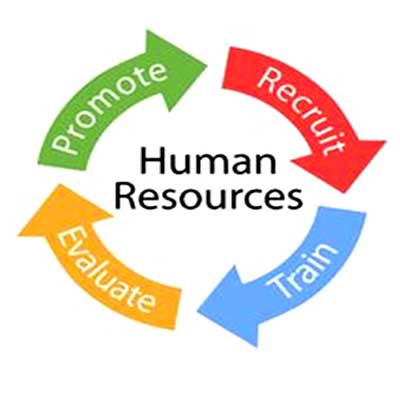HR For Small Business: Challenges and Solutions | Aparna Sharma | Senior HR Professional & Certified Corporate Director I Editor’s Collection
 Small & Medium Businesses (SMBs) face many operating challenges with human resources issues at the forefront. Remaining compliant with the countless central, state, and local law requirements takes a concentrated focus. Since SMBs don’t often have a dedicated human resources staff or other resources, it can be hard to stay on top of the ever-changing employment landscape.
Small & Medium Businesses (SMBs) face many operating challenges with human resources issues at the forefront. Remaining compliant with the countless central, state, and local law requirements takes a concentrated focus. Since SMBs don’t often have a dedicated human resources staff or other resources, it can be hard to stay on top of the ever-changing employment landscape.
Here are some of today’s major HR issues businesses are facing: 1. HR Compliance 2. Hiring, and Onboarding 3. Wage and hour 4. Benefits 5. Employee Management.
CHALLENGE #1: HR COMPLIANCE
 Having the right HR infrastructure in place is a key ingredient for your business’s success. It will help you keep your company on track, create a diverse and engaged team, while cultivating a culture your employees are proud to identify with.
Having the right HR infrastructure in place is a key ingredient for your business’s success. It will help you keep your company on track, create a diverse and engaged team, while cultivating a culture your employees are proud to identify with.
HR compliance is a critical issue for SMBs. The employment landscape seems to grow in complexity daily with new employment laws, regulations, and requirements for employers. Employers of all sizes are vulnerable to fines and penalties for noncompliance with HR and employment laws, rules, and regulations. With employment lawsuits on the rise and compensatory awards, noncompliance is expensive.
Here are a few areas to keep an eye out for:
- ● Building HR infrastructure within the business.
- ● HR policies for multiple locations, considering state and local jurisdictions, and communicating the company’s rules through a well-crafted employee handbook and employee communications/training.
- ● Payroll, including local minimum wages.
- ● Time off and leave rules. ▪ Benefits ▪ Training. ▪ Recruiting and hiring. ▪ Onboarding.
- ● Compliance. ▪ Tax. ▪ Safety. ▪ Workers’ compensation insurance. ▪ Safety (OSHA logs and reports). ▪ General employment notices (new hire, leave, termination notices). ▪ Industry and state reporting or notification requirements.
Best practices for HR compliance
- Create an employee handbook that includes applicable company, state, and central policies and sets the tone for the culture of the organization. ● Maintain an updated compliance calendar that includes all posting, notification, and filing deadlines. ● Ensure that payroll and benefits tracking systems are in place. They should properly record and report work hours, time off, and other employee payments and deductions. ● Train supervisors on non-discrimination practices, proper time tracking, and other employment policies affecting your business.
CHALLENGE #2: RECRUITING, HIRING, AND ONBOARDING
Recruiting and hiring is a critical issue for SMBs.
Significant hiring activity means increased competition for the best employees. Not to mention the pressure of getting it right, because hiring the wrong employees can be costly. Although there are conflicting viewpoints on the cost of a bad hire, there are certain tangible costs associated with recruiting that everyone can agree on. These costs include: ● Job placement ads on sites such as Monster, LinkedIn etc. ● Hiring recruiters. ● Managing internal recruiting and hiring processes and time to select the right hires. Businesses of all sizes are facing the increasing skills gap left by retiring baby boomers.
Great employees represent your brand well, drive productivity, and boost employee morale, translating into better customer service and more sales. Replacement costs for bad hires, coupled with the other damage they can do to your business, can be high. The right staffing and onboarding processes are critical to your success in the talent marketplace.
Best practices for recruiting and hiring
Keep in mind that you are competing with other SMBs and larger organizations for talent. Any steps you can take to make the process easy for candidates, and to make candidates feel valued, will strengthen your employment brand and lead to hiring success. The key is to focus on the candidate experience.
Best practices for hiring include: ● Clearly defining the specs of the job so that you can describe the context and opportunity to candidates. ● Posting jobs in a variety of job sites, using social media, online job boards, local schools, and community organizations to broaden your reach. ● Having an easy to complete online application and submittal process ● Ensuring the entire process and the website is mobile-friendly. ● Over-communicating throughout the process so the candidate knows the timeline and where he or she is in the hiring process.● Developing strong recruiter relationships (if needed). ● Implementing an employee referral program. ● Developing a consistent screening process that is applied with all applicants to streamline your hiring process ● Conducting background checks and verifying employment eligibility. ● State regulations vary. Be sure to check with your local guidelines.
Best practices for onboarding
Once you hire your employees, you need to make sure that they feel welcome. Having a great onboarding process helps your new hire to understand company expectations and ensures they are trained properly. It’s also a great way to differentiate your business from others. Best practices include : ● Ensuring that all your orientation processes, forms, and payroll/benefits/HR systems are ready for the new hire. ▪ Consider having employees complete some of the paperwork before their first day so that they can immediately start training and get in the swing of the new job. ● Providing new employees with uniforms and other necessary company materials at their work stations so they are ready to go. ▪ When a new hire walks in and finds that everything is ready, it sends the message that they are important to you and your business. It may seem small, but for many it’s the small stuff that goes a long way. ● Focusing on socialization and training, not just policy and procedure.
CHALLENGE #3: WAGE AND HOUR
One of the most common questions businesses have is how to properly classify and pay employees. The Ministry of HRD has put an increased focus on this topic. They proposed a steep salary threshold change last year that would make some currently overtime-exempt employees eligible for overtime, increasing business costs. This change was temporarily halted and is currently under review Another worker classification issue is understanding whether someone is an independent contractor or an employee. There are a few other differences such as, an employee is covered by central, state employment and labor laws while a contractor is not. Get this wrong and it’ll cost you…a lot.. Other wage-related issues include:
- Minimum wages. ▪ The potential consequences of violating minimum wage laws can be particularly costly, but are also avoidable. For SMBs with multiple locations, keeping track of the wage changes can be daunting. • Overtime. Overtime rules vary at the state level. Be sure to manage scheduling to control additional payroll costs. • Work scheduling. • Meals and rest breaks. The rules relating to meal breaks and rest periods vary by state. Violations of these rules can result in additional overtime pay and penalties for not providing adequate rest breaks. Understanding the laws relating to mothers needing break time for lactation is also important.
Wage and hour best practices
Because of the complexity of pay rules at the state and local levels, businesses need to have access to resources that help them stay on top of the current requirements relating to those rules. Best practices include: • Evaluating jobs to ensure that they aren’t being paid overtime (exempt) and are properly classified • If your business employs workers as independent contractors, review contracts and job duties to ensure that the job meets the independent contractor status. • Audit work schedules periodically to ensure compliance with the law, including how meal and rest breaks are scheduled. • Periodically audit overtime records. • Review your practices for granting employees time off for various leave situations, such as sick leave, school leave, voting time, medical leave, and other types of leaves applicable in your work locations.
CHALLENGE #4: BENEFITS
To compete for talent, most SMBs recognize the value in offering benefits to their employees. The challenges in providing benefits include the rising costs, administration, and compliance with changing regulations, especially as they relate to health care.
Uncertainty is the biggest component today for businesses that provide health insurance. Other benefits issues include: • Paid sick leave. The requirements vary widely by location, thus requiring businesses to pay careful attention to ensure they are enforcing the applicable rules for their location.
Benefits best practices
- Work with your benefits broker and payroll provider to ensure that employees are enrolled properly in benefits and receive the necessary benefits notifications. • Establish systems and practices to ensure that employee time off is properly recorded for benefits reporting and leave tracking is in place. • Review benefits programs, eligibility requirements, and processes annually. • Establish new hire and termination processes to ensure that employees receive the necessary benefits enrollment. • Review and communicate all benefits offered, including life insurance, wellness programs, employee recognition programs, etc. to ensure that you are maximizing the value of the benefits you offer. Survey your employees regarding the benefits that are most valuable to them and work with your benefits plan provider to create a benefits program that gives you the biggest return on your investment.
CHALLENGE #5: EMPLOYEE MANAGEMENT
Employees are the lifeblood of any organization. Without a productive and engaged workforce, no organization can thrive. Yet, even the most gung-ho workforce needs direction, training, and occasionally, discipline. An organization that focuses on its relationships between management and employees, as well as interactions among peers, will have positive employee relations. Good employee relations produce a positive morale and higher work performance. This results in better customer service and production and allows your company to focus on the business at hand rather than dealing with personnel-related problems. Employee management includes: • Managing performance. • Employee training. • Discipline. • Termination of employment.
Employee Management best practices
• Establish measurable work performance objectives for each job and make sure that these objectives are clear to your employees. • Provide regular performance feedback (daily, weekly, monthly) and correct performance issues early. Establish action plans to get problem performance on track. Document performance for rewards, recognition, or job changes. • Create recognition programs to highlight key performance behaviors that you value, and reward employees who meet those performance requirements. • Provide career coaching and development opportunities to enhance employee productivity, engagement, and retention. • Train supervisors and managers to understand, not only their compliance obligations (for safety, employment law rules), but also coaching and communications. Surveys have indicated that one of the top reasons employees leave companies is because of the supervisor. Don’t allow that to be the case in your organization. • Ensure that work rules and employment actions are based on objective business reasons to mitigate the risk of charges of unfair treatment. • Review disciplinary processes and ensure that termination employment decisions are carefully considered and reviewed.


